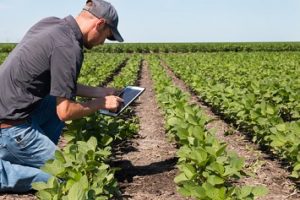Farmers like to point out that they feed the world—but could farming practices actually save the world by reversing climate change? Perhaps. The practice of “carbon farming”—using farming practices that either directly reduce greenhouse gas emissions or that sequester carbon in soil or vegetation—is increasingly promoted as a method that could, together with fossil fuel emissions reduction, stop the rise in global temperature and begin to reverse it.
New Frontiers in Carbon Offsets
The idea that industries can offset their carbon production by creating or purchasing carbon offsets is not new. Many large companies either purchase offsets or create their own by buying up land and planting trees or by paying for clean energy projects that reduce or capture atmospheric carbon emissions—for example, by buying energy-efficient cookstoves for distribution in third-world countries or by installing systems to capture methane emissions at landfills.
Likewise, the idea that agricultural practices may be both part of the problem and part of the solution is not new. In 2014, the Intergovernmental Panel on Climate Change (IPCC) identified agriculture and forestry as the second-leading source of greenhouse gas emissions—but noted that about 20% of those emissions are offset by carbon sequestration occurring in the same sector.
What’s new is the idea that changes in agricultural practice may be able to offset enough carbon to stabilize the planetary climate by returning atmospheric carbon to 350 parts per million while enhancing soil fertility and increasing food security. Hand-in-hand with this idea is the possibility that farmers who embrace carbon farming practices may produce enough carbon offsets not only to render global agriculture carbon-neutral but also to sell offsets to industries that have much greater difficulty controlling their carbon footprints.
How Carbon Farming Works
“Carbon farming” methods that sequester atmospheric carbon are generally “polycultures,” producing multiple agricultural products on a single acre, in contrast with the more common “monoculture” farming. In monoculture agriculture, only one cash crop is produced on a single acre in an attempt to cash in on factory-style efficiencies and economies of scale in crop production—but at a high carbon cost. Polycultures that reduce carbon impact include multistrata agroforestry and silvopasture.
- Multistrata agroforestry, on both small and large scales, is (as the name suggests) the cultivation of a forest constructed, from the top down, of trees, shrubs, vines and herbs, fungi, and possibly livestock.
- Silvopasture combines the cultivation of commercial tree production (for example, Christmas trees or hardwoods) with the pasturing of livestock, which forages beneath the trees.
Greater biodiversity in such systems increases the amount of carbon sequestration per acre over conventional agricultural and forestry practices and can, once fully implemented, increase both food production and farmer profits.
Tomorrow we’ll look at an even more direct way that carbon farming is helping companies with their sustainability efforts.

